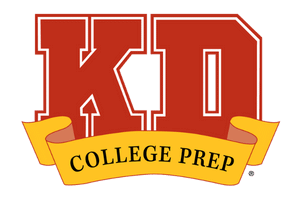When you received your child’s PSAT/NMSQT® test scores, you may not have had much of an idea what you were looking at. Beyond knowing what all those numbers indicate, you also want to know how they correspond to your family’s next steps. You may not be sure whether you should be rejoicing or consoling, visiting Stanford or hiring a tutor, or somewhere in-between.
First, relax! Needing help to navigate the PSAT/NMSQT® test is completely normal!
Here are some common questions and answers to help you and your young adult navigate these test scores worry-free.
Common Question 1:
How do I read the numbers?
Section scores and composite
Each section of the test—Reading/Writing and Math—is scored between 160 and 760. 460 is the college prep benchmark for Reading/Writing, and 510 is the benchmark for Math. A perfect score on the PSAT/NMSQT® test would be 1520, and an average composite score will hover around 1000.
Compared to SAT® test
The current PSAT/NMSQT® test is already calibrated to predict student performance on the SAT® test. Whereas the score range for the PSAT/NMSQT® test is 320 to 1520, the score range for the SAT® test is 400 to 1600. According to the College Board®, the scores are equivalent. So, you don’t have to do any math to figure out how close your child is to his or her goal score. A student who scores a 1200 on the PSAT/NMSQT® test can expect to score about 1200 on the SAT® test without further preparation.
Percentile
The percentile score shows how your child compares to the other test-takers. The closer this percentage is to 99, the higher your child’s rank. “99th percentile” refers to the topmost tier of student scores. Students who qualify for National Merit® Semifinalist must rank not just in the top 1 percent but in the top 0.5 percent of test-takers in their state.
Selection Index Score (SIS)
This score indicates National Merit® eligibility on the 11th grade test and is the same as the “NMSC Selection Index” number on the score report. You can also calculate an SIS from the PSAT/NMSQT® test score: Reading/Writing score + Reading/Writing Score + Math score, then divide the total by ten. Since National Merit® semifinalists are those scoring in the 99.5 percentile in each state, scores that indicate eligibility vary not only state by state but year by year. But you can still get a general idea of whether to be waiting for news: in recent years, Texas qualifiers have scored 220 and above. The maximum possible SIS score is 228.
Common Question 2:
How do I know what’s “good enough?”
Good enough for college?
A little online research into a college’s SAT® test score requirements can show how your child’s PSAT/NMSQT® test scores compare. This can help you see whether you’re closing in on admission goals, or need more work. On the college’s website, search for “Freshman Admission Requirements,” or look at the profile for the current freshman class.
Good enough for National Merit®?
First, let’s take a brief look at how awards and recognitions work for National Merit® entrants. From the total pool of test-takers each year, 50,000 of the top scorers gathered by state will receive “Program Recognition.” Sixteen thousand of these top scorers are awarded “Semifinalist” status, while the remaining 34,000 receive “Commended Student” status. All National Merit® Semifinalists must then apply for Finalist with a high school transcript, essays, and SAT® test scores. After further consideration of recommendations and academic records, about 7,500 of these entrants will receive National Merit® Scholarships. In addition, many corporations, colleges, and other entities offer scholarships to National Merit® Scholars.
Here’s what all of that means:
For 11th graders
After test-taking, learning what National Merit® might mean for your family is a waiting game. National Merit® semifinalists are announced in September each year, 11 months after students take the PSAT/NMSQT® test. If students are named as semifinalists, then they move on to submitting transcripts, essays, test scores, and recommendations. During this process, encourage your child to go ahead and begin researching what kind of corporate and college scholarships a qualifying score might bring.
If the scores are not at the level your child hoped for, there is absolutely no need to despair! National Merit® qualification (even test scores in general) aren’t everything. Talk about it. Have coffee or a nice dinner together and encourage your child to keep pursuing colleges that feel like a good fit. There are many opportunities to boost SAT® and ACT® test scores for admission and scholarship and to make a great impression on schools through other channels such as leadership and essays.
For 9th/10th graders
Students at this level can continue to work hard and pace themselves. If scores are already up near the level that your child wants them to be, great! But continue to help your child stay the course and build the patience, fortitude, and relationship skills that make for sustained achievement. Academic excellence is just one piece of the puzzle.
If your child’s scores didn’t make him or her jump for joy, it may be that expectations were too high for this stage in the game. Though it’s wonderful if it happens, your child shouldn’t expect to achieve his or her ideal 11th-grade score in 9th or 10th grade. But if your child was significantly shy of his or her goal, focus on encouragement and continued goal-setting. Continue to assess future plans, consider tutoring and other test prep services, and keep academic achievement in perspective with the rest of life.
Most of all, let your child know by word and deed that you are in the cheering corner, 100 percent.
To explore tutoring and test prep options that fit your child’s needs, achieve goals, and always put your child’s wellbeing first, get in touch with us at KD College Prep

